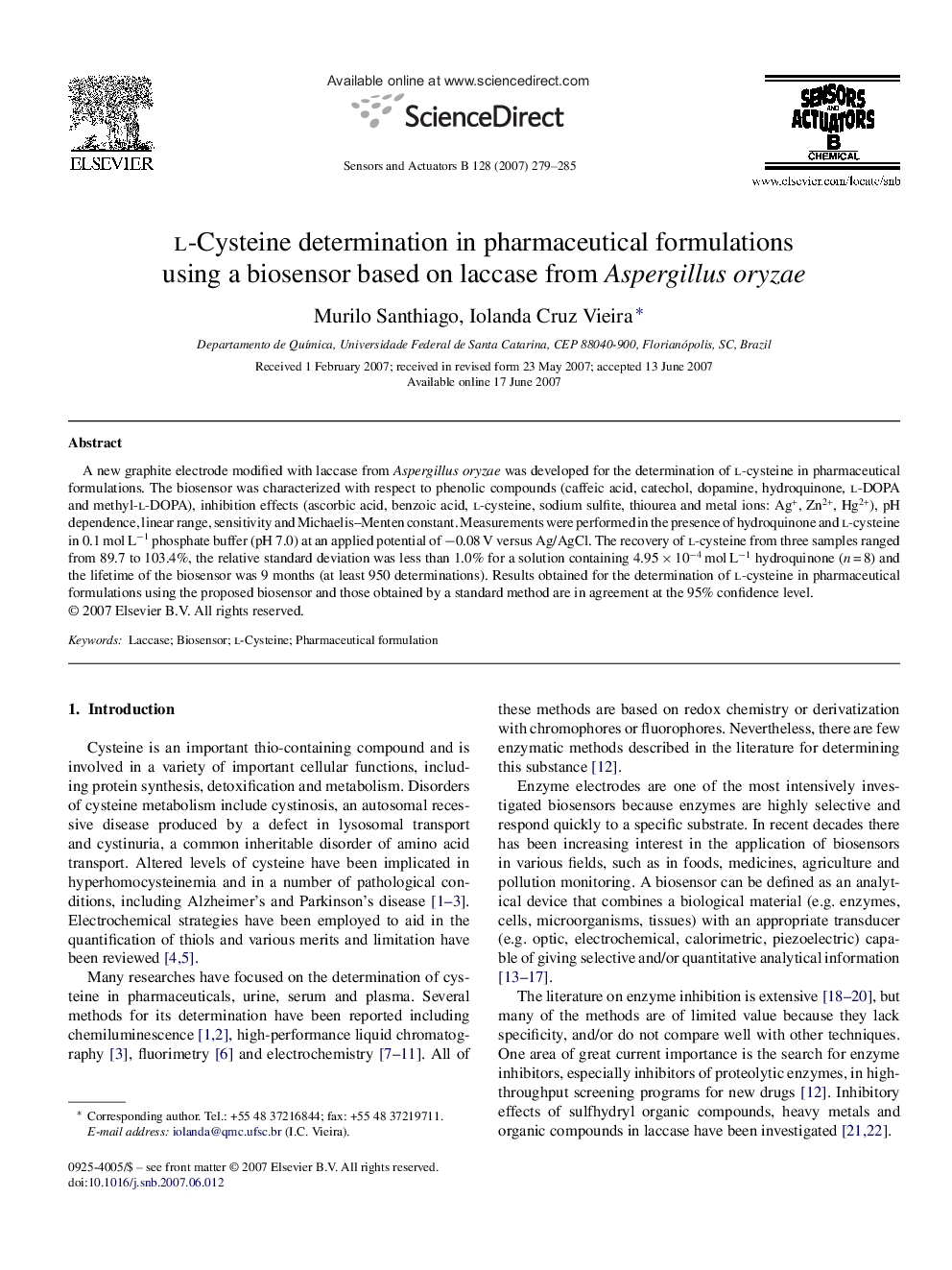| Article ID | Journal | Published Year | Pages | File Type |
|---|---|---|---|---|
| 744507 | Sensors and Actuators B: Chemical | 2007 | 7 Pages |
A new graphite electrode modified with laccase from Aspergillus oryzae was developed for the determination of l-cysteine in pharmaceutical formulations. The biosensor was characterized with respect to phenolic compounds (caffeic acid, catechol, dopamine, hydroquinone, l-DOPA and methyl-l-DOPA), inhibition effects (ascorbic acid, benzoic acid, l-cysteine, sodium sulfite, thiourea and metal ions: Ag+, Zn2+, Hg2+), pH dependence, linear range, sensitivity and Michaelis–Menten constant. Measurements were performed in the presence of hydroquinone and l-cysteine in 0.1 mol L−1 phosphate buffer (pH 7.0) at an applied potential of −0.08 V versus Ag/AgCl. The recovery of l-cysteine from three samples ranged from 89.7 to 103.4%, the relative standard deviation was less than 1.0% for a solution containing 4.95 × 10−4 mol L−1 hydroquinone (n = 8) and the lifetime of the biosensor was 9 months (at least 950 determinations). Results obtained for the determination of l-cysteine in pharmaceutical formulations using the proposed biosensor and those obtained by a standard method are in agreement at the 95% confidence level.
